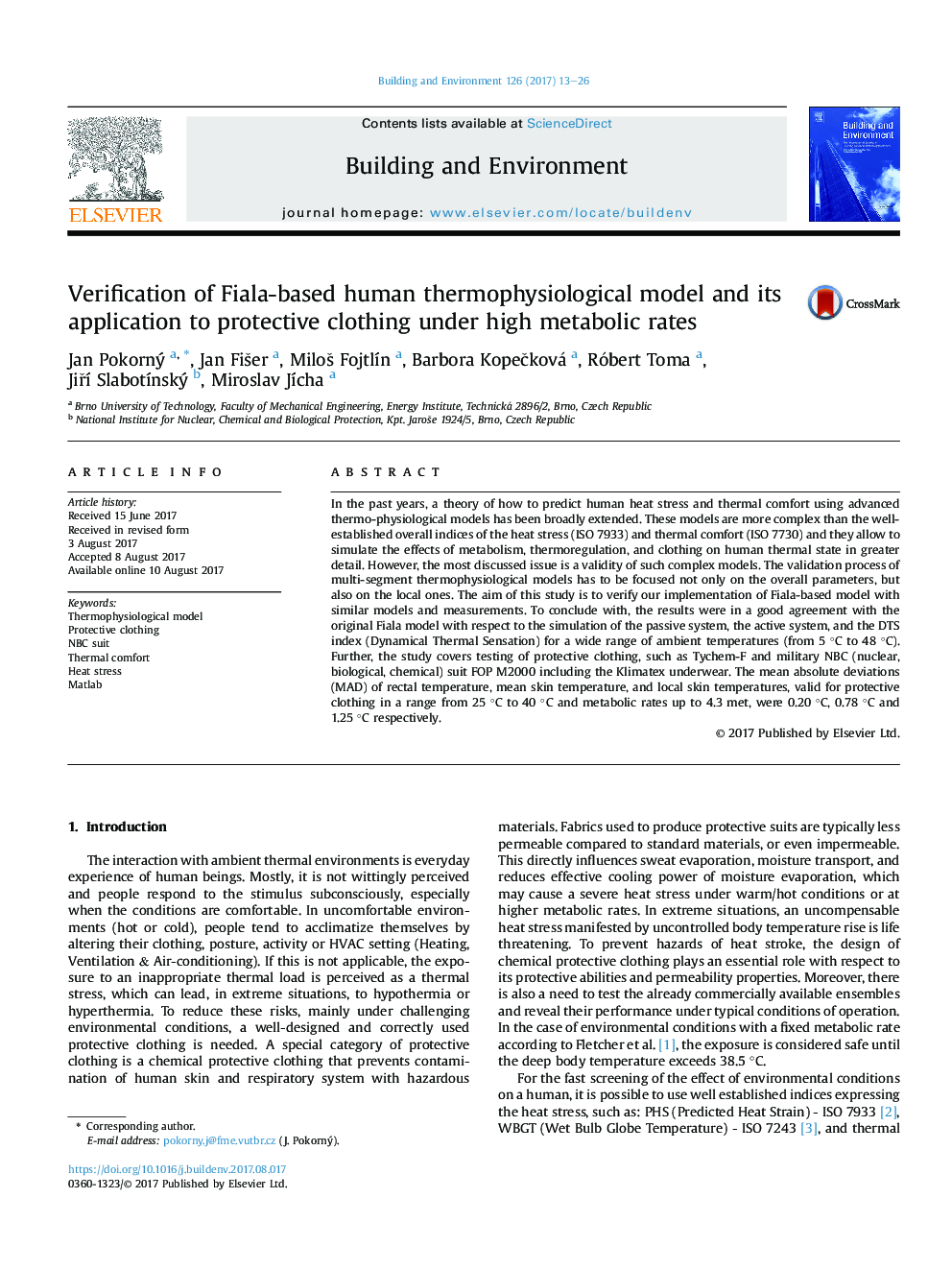| کد مقاله | کد نشریه | سال انتشار | مقاله انگلیسی | نسخه تمام متن |
|---|---|---|---|---|
| 6479163 | 1428366 | 2017 | 14 صفحه PDF | دانلود رایگان |
- The Fiala-based thermophysiological model was implemented in Matlab.
- The model was verified for wide range of conditions.
- Results are comparable with other Fiala-based models.
- It was applied for chemical-protective clothing in warm/hot conditions during exercise.
- Detailed identification of clothing thermal and evaporative resistances is demanding.
In the past years, a theory of how to predict human heat stress and thermal comfort using advanced thermo-physiological models has been broadly extended. These models are more complex than the well-established overall indices of the heat stress (ISO 7933) and thermal comfort (ISO 7730) and they allow to simulate the effects of metabolism, thermoregulation, and clothing on human thermal state in greater detail. However, the most discussed issue is a validity of such complex models. The validation process of multi-segment thermophysiological models has to be focused not only on the overall parameters, but also on the local ones. The aim of this study is to verify our implementation of Fiala-based model with similar models and measurements. To conclude with, the results were in a good agreement with the original Fiala model with respect to the simulation of the passive system, the active system, and the DTS index (Dynamical Thermal Sensation) for a wide range of ambient temperatures (from 5 °C to 48 °C). Further, the study covers testing of protective clothing, such as Tychem-F and military NBC (nuclear, biological, chemical) suit FOP M2000 including the Klimatex underwear. The mean absolute deviations (MAD) of rectal temperature, mean skin temperature, and local skin temperatures, valid for protective clothing in a range from 25 °C to 40 °C and metabolic rates up to 4.3 met, were 0.20 °C, 0.78 °C and 1.25 °C respectively.
Journal: Building and Environment - Volume 126, December 2017, Pages 13-26
